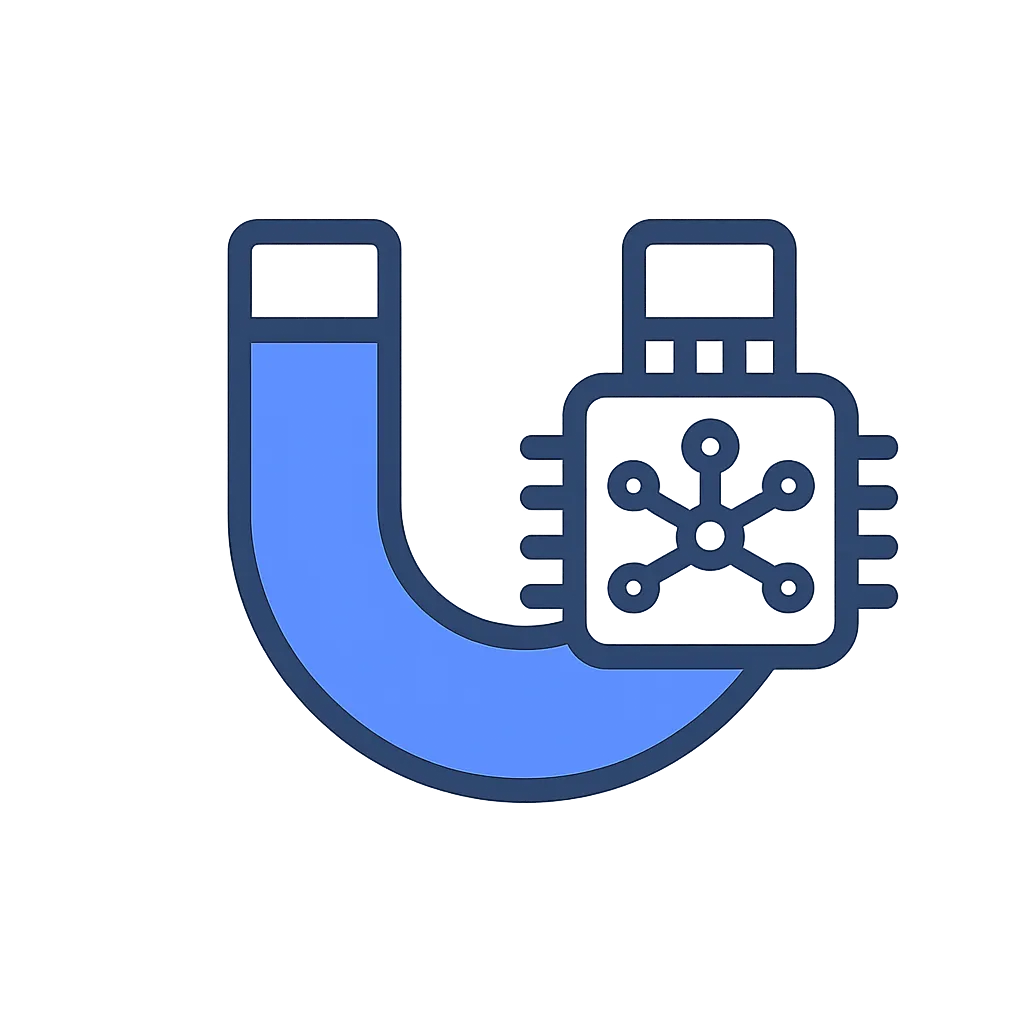How to Create a Lead Magnet That Captures Qualified Leads


So your beautifully polished site is finally pulling in traffic—grand stuff! But traffic alone isn’t a business model, is it? The ultimate goal is to have those visitors raise their hands, join your list, and eventually open their wallets.
That’s what lead magnets are all about. A well-targeted lead magnet can lift sign-ups by up to 400 percent compared to a generic sign-up form.
In the next few minutes, we’ll walk through every cog in the machine—choosing the right format, building it fast, and launching it like a pro—so you can turn browsers into buyers on autopilot.
Why Lead Magnets Matter in Your Funnel
A lead magnet is simply a “give-to-get” offer — think templates, problem-solving tools, quizzes, or mini-courses — traded for contact details. Marketers rank these freebies among the highest-performing list-growth tactics year after year. Lead capture is one of the biggest drivers of revenue growth in 2025. Why?
-
ROI snapshot: higher-value magnets often out-convert generic pop-ups by triple digits.
-
Quality over quantity: interactive custom-made magnets built around a clear buyer persona collect richer data and slash list churn by keeping only the right people engaged.
-
Execute with precision: use the insights from behaviour-rich data captured with bespoke AI-powered magnets to fire laser-focused personalised CTAs, marketing comms, campaigns and offers.
-
Myth-busting pop-up hate: users ignore pop-ups only when the value proposition stinks. Pair a clear headline with a juicy download, and complaints plummet.
Bottom line? Strong lead magnets wedge open funnel door and let you nurture each prospect segment, steering them forward, fuelling targeted journeys and lifting conversion rates.
10 Effective Go-To Lead Magnet Types
The formats below repeatedly top “best-of” studies and conversion benchmarks across B2B, B2C, and creator brands.
Use these lead magnet categories to match the kind of value your audience wants (speed, personalisation, depth, savings, or proof) to help you decide which magnet to create. Scan the snapshot line to know why the bucket pulls, then glance at the examples to see what to build.
Of course, even the best formats won’t work if the execution is flawed. Make sure you’re not unknowingly falling into one of the lead magnet mistakes that kill conversions — they’re more common than you’d think.
1. Quick-Reference Assets
One-page or tightly curated resources that give an immediate win. They convert because the prospect can see the payoff in seconds.
-
Checklist / Cheat-sheet – e.g., “12-step launch checklist.”
-
Swipe File – bank of winning headlines, ads, or emails.
-
Resource List / Toolkit – hand-picked links or tools.
2. Plug-and-Play Builders
Fill-in-the-blank assets that let users create something faster than starting from scratch, trading your template for their email.
-
Template – social-media calendar, proposal deck, budget sheet.
-
Worksheet / Workbook – spaces for users to plug in their own data.
3. Learning Experiences
Longer-form teaching that positions you as the expert and keeps attention for days or weeks. Works best when trust or higher ticket prices are in play.
-
Mini eBook / Guide – 5-20 pages solving one problem.
-
Email Course / 5-Day Challenge – drip lessons + daily micro-tasks.
-
Webinar / Live Workshop – real-time Q&A adds urgency and authority.
4. Interactive & Personalised Tools
Ask. Analyse. Deliver. Visitors fill what looks like a simple form in return for a bespoke action plan, score, or idea bank. This “built-for-me” feel and novelty means capturing more emails and giving you richer behavioural insight to steer follow-ups.
These formats work so well because they tap into powerful psychological triggers like curiosity, authority bias, and personal relevance.
-
Interactive Quiz – segment users and reveal results behind the gate.
-
AI-Personalised Tools – think build any tool you can create with AI prompt.
5. Incentive & Trial Offers
Tangible savings or hands-on product experience that lowers purchase risk and nudges quick decisions.
-
Discount Code / Coupon – %-off or free shipping for e-commerce.
-
Free Trial / Interactive Demo – limited-time access to the product.
6. Proof-Driven Content
Data-heavy assets that remove doubt by showing real results, ideal for executive or B2B audiences who need ROI proof.
-
Case Study – narrative of a customer win, often with metrics.
-
White Paper – deeper research or benchmark report.
Tip: Cross-reference buyer intent with the type of lead magnet to offer. A CFO researching costs might prefer a savings calculator; a designer skimming on mobile will love a swipe file. Keep it human.
How to create the perfect lead magnet (Your 7-Step Blueprint)
Every high-converting lead magnet follows the same rhythm – solves a single, painful problem for a defined reader, delivers the win in minutes, and sign-posts the next step.
Step-by-Step Creation Checklist (9-Step Playbook)
1. Define the Who
Start by slicing your targeted audience. You need to pick and zero in on a single persona. Offers written for one persona convert better than broad pitches because every line “speaks their language.”
Pro Tip: Write a single line persona description and goal (“Busy parent looking for easy dinner ideas”) and to keep that profile visible while you create. That’s your north star, guiding every later decision of your lead magnet creation process.
2. Pinpoint the Burning Pain
Make a list of all the problems that keep your persona up at night. Pick the most pressing, one that your persona is already googling or looking for solutions in social threads. Promise and deliver a fix they can use today.
3. Decide where the lead magnet should live—and help people find it
Your lead magnet can live in a number of places:
-
On a dedicated landing page. A landing page gives you room to show off what the lead magnet offers and includes a clear call to action (CTA). This is where you’ll link people from other spots as well.
-
In your blog posts. Include a smaller CTA within your blog posts, so people who find your content valuable can move down the funnel to the next stage.
-
On your home page. This is for anyone who reaches you via Google Business Profile or another search that gets them directly to your home page. A smaller CTA will do the trick here too.
3. Pick an “Easy-to-Finish” Format
Checklists, swipe files and brief quizzes top conversion charts because they deliver a win in minutes. Interactive AI-powered tools — calculators, planners of all types or idea generators — pair quick delivery with raised engagement and can double sign-ups thanks to the “made-for-me” effect.
Pro Tip: Short-form magnets tackling one issue convert better than sprawling guides. Rule of thumb: Use the easiest to use format for your targeted persona that delivers the promised result or a visible win.
4. Craft a Punchy Title – Name the Pay-off
Make the payoff obvious. Headlines that highlight a concrete result drive significantly higher click-through rates than asset-type labels that focus on the format of the freebie.
| DON’T: Asset-Type Title | DO: Power Verb + Outcome Title |
|---|---|
| ”Weekly Budget Worksheet" | "Slash Monthly Spending by 20%“ |
| “Healthy Recipes eBook” | “Drop 5 Pounds in 14 Days (No Calorie Counting)” |
| “Spanish Vocabulary Flashcards” | “Master 100 Essential Spanish Words in 7 Days” |
Lead with a power verb + outcome (e.g. “Grow MRR 3× in 30 Days”). Headlines alone can swing download rates, so make the promise crystal-clear and curiosity-driven.
5. Killer Content – Outline for Skim Speed
Outline three to five bite-sized blocks — aim for no more than two short paragraphs per section. Use sub-heads, bullets, icons to aid rapid skimming and reader navigation. Give each a stat, an example, and an action so readers finish in five minutes flat.
Remember, wall of text will tank your engagement, but short “snack magnets” build trust faster and are quicker to make .
Pro Tip: Aim for two-scrolls max on mobile.
6. Design & Branding – Polish the Look
Whenever possible use templates or magnet building software to speed up creation process and keep design consistent. Opt for templates and magnet builders that allow you to swap in brand colours. Visual consistency builds brand awareness and boosts trust, while template workflows cut design time drastically.
Graphics make your magnet visually appealing but remember not to overload - white space will help keep your design clean and easy on the eye. Mobile visitors will thank you.
7. Post Launch – Measure, Test, Refresh
The moment your magnet goes live make sure to log opt-ins, clicks and downloads. Some lead-capture tools automatically track and pull these numbers into neat dashboards.
Once enough of the vital stats are in it is time to experiment! Run split tests with one tweak per round – headline, copy length, colour, magnet location, images and so on. Changing just one element per A/B test helps to keep results clean and nail the cause of any lift.
Audit magnets every quarter. Refresh or retire any asset that falls under 50% of your portfolio average.
Do this, and your lead generation funnel will continue flowing and prevent outdated offers from dropping your conversion rates.
Launch Your Magnet Today
Most businesses chase leads; smart ones attract them.
So stop chasing prospects. Create a value-packed magnet and let it bring them to you, filling the pipeline on autopilot.
Follow the 7-step blueprint: sketch persona profile, pick their nagging pain and craft a mini solution with a bold CTA
Start Building Your Lead Magnet Today
Join thousands of marketers using AI to create lead magnets that convert
Start For Free →No Card Required
